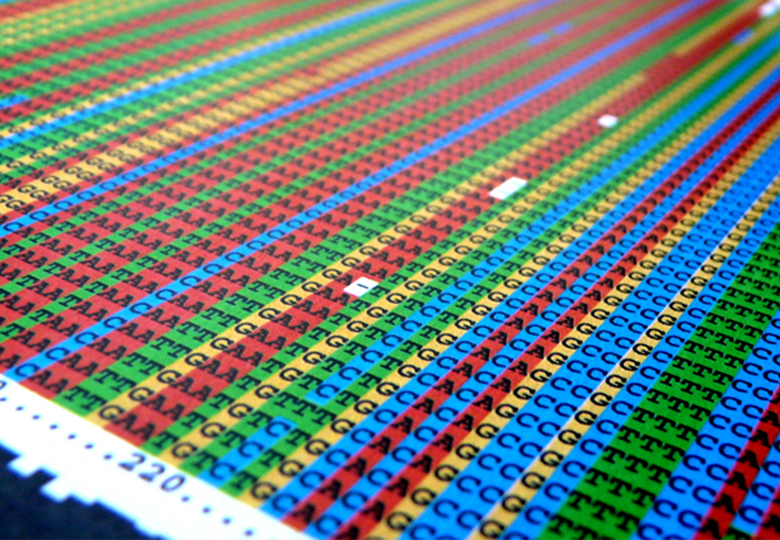Deborah Oakley
Fifteen years ago, the Human Genome Project announced with a fanfare that it had completed a ‘first draft’ of the code, or sequence, of information in the genes within the human body. On the anniversary of this announcement, scientists at the MRC’s Clinical Sciences Centre (CSC) got a warning – that experiments to sequence human genes can, and do, go wrong.
The warning came from Simon Andrews, head of bioinformatics at the Babraham Institute in Cambridge. Bioinformatics uses software to understand biological data, and Andrews’ message was that human error can still be a problem. “I’m showing you some of the ugly sides of sequencing experiments,” he told the audience of CSC scientists.

Typos, swapped samples and mis-behaving genes can cause confusion for scientists studying genetic codes
Rapid advances in technology mean scientists can now sequence entire human genomes in a matter of hours, and for less than £1000. But according to Andrews, even the latest technology doesn’t stop scientists from making mistakes.
When they experiment on samples of DNA, scientists sometimes store copies in a central library, so that other researchers can access and study the same genes. Each sample is given a label to show what it contains, but sometimes researchers make minor typos that can transform the label’s meaning. “It’s amazing how many libraries have mistakes,” said Andrews. “It’s the easiest way to screw up your sequencing experiment.”
Samples can also get swapped around and mixed up, or become contaminated if the equipment used to handle them is not kept clean. These simple errors can derail experiments, and render results unreliable. Andrews advised researchers to be sceptical of their samples. He’s developed computer software that analyses the DNA to make sure that it matches what’s written on the bottle.
And even with advanced analytical tools, Andrews cautioned that sometimes samples of DNA simply don’t behave. “Biology is tricky, and it isn’t always going to play ball with you,” he said. To make sure you get accurate results, Andrews advised that scientists should really explore their samples, and make sure they understand what they have before they get started with experiments.
Thomas Carroll, Head of Bioinformatics at the CSC, invited Andrews to give a talk to encourage collaboration between his team and those working at the Babraham. “Simon is an authority on high throughput sequencing with his own team – creating and maintaining popular open source software for the analysis of this data. Software such as Bismark and FastQC are intrinsic to bioinformatics work here at the CSC. Simon provided a fantastic overview of the use of such tools in the assessment of high throughput sequencing technologies. Most importantly, Simon brings his years of experience working with sequencing data and shared his efforts in troubleshooting problems. As with all of the Bioinformatics Seminar Series we aim to bring in speakers with experience not found within the CSC but relevant to our work. We hope that by forging ties with bioinformatics teams such as Simon’s we share skills and experience in the delivery of high quality data analysis and benchmark our own team against other leading institutes.”
Read more about bioinformatics at the CSC here and here, and about Simon Andrews’ work.
For further information, contact:
Deborah Oakley
Science Communications Officer
MRC Clinical Sciences Centre
Du Cane Road
London W12 0NN
T: 0208 383 3791
M: 07711 016942
E:
